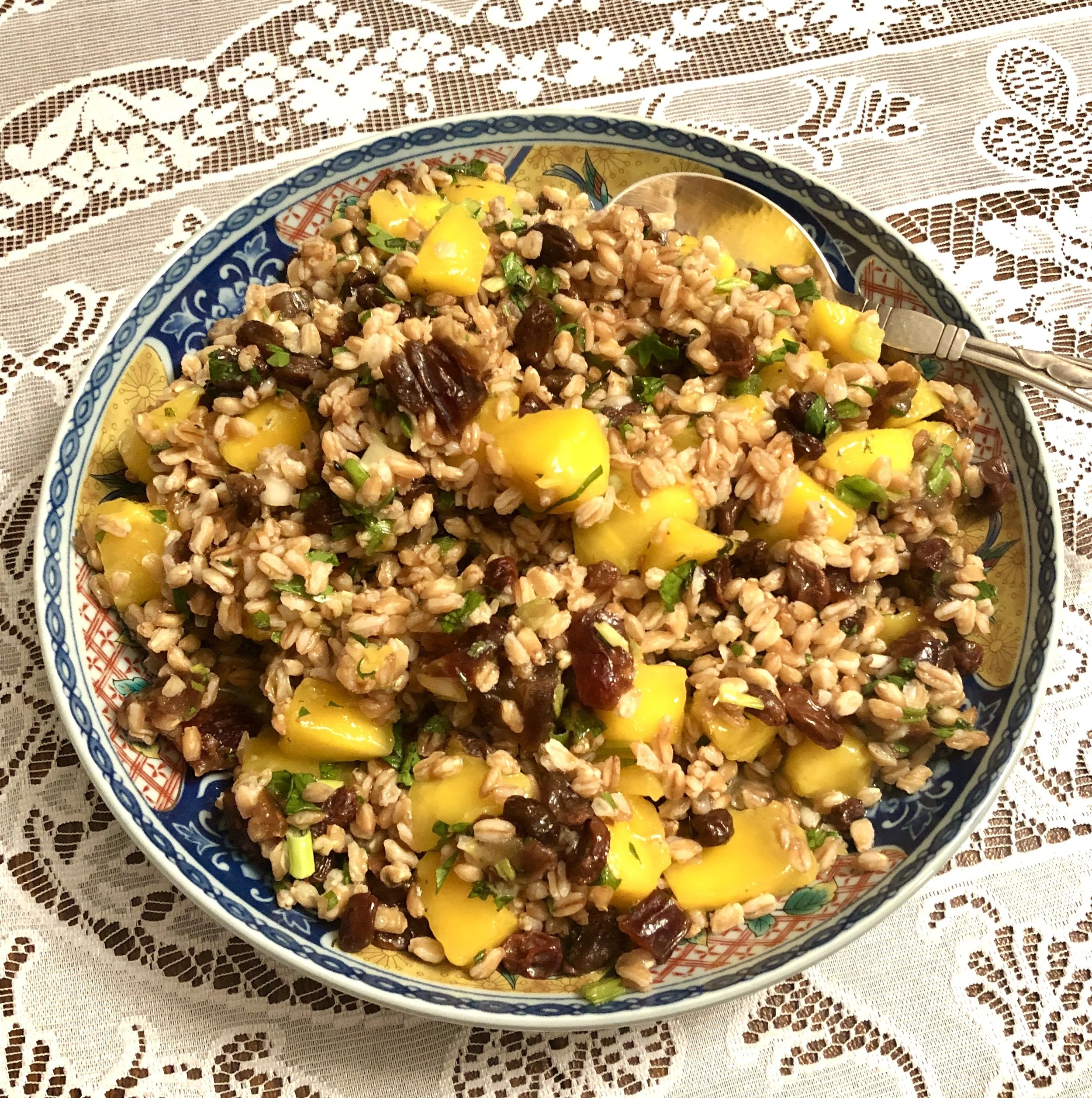Farro with Dates, Nuts and Mango
People are always surprised when I say that Tu B’Shevat is one of the most delicious of the Jewish holidays — gastronomically speaking, of course! For a woman like me, who loves fruits, nuts, whole grains, (classic ingredients for Tu B’Shevat recipes) — making something for this holiday is a real treat.
I demonstrated this dish a few months ago at Temple Beth El Synagogue in Stamford, CT as part of a Rosh Hashanah event. Thing is, this dish is a year ‘round favorite, but is especially appropriate for Tu B’Shevat.
WHOLEGRAIN SALAD WITH DATES, NUTS AND MANGO
1 cup wholegrain such as freekeh, farro, brown rice, oat groats, barley
8 medjool dates, chopped
1 cup thawed, frozen peas, cubed tofu or leftover chicken
3/4 cup chopped nuts (almonds, cashews, pistachios)
1/2 cup raisins
1 ripe mango, peeled and diced (or use peach, nectarine or halved grapes)
4 chopped scallions
1/4 cup chopped fresh parsley
2 tablespoons chopped fresh mint
6 tablespoons extra virgin olive oil
3 tablespoons white wine vinegar
3 tablespoon mango juice or orange juice
2 tablespoons lemon juice
Salt and freshly ground black pepper to taste
Cook the grain according to package directions until the grains are tender but still somewhat firm and all the liquid has been absorbed. Remove from the heat and set aside to cool. Place the cooked grain in a bowl. Add the dates, peas, nuts, raisins, mango, scallions, parsley and mint. Toss ingredients gently to distribute them evenly. Combine the olive oil, white wine vinegar, mango/orange juice and lemon juice and whisk vigorously. Pour the dressing over the salad. Toss the salad and season to taste with salt and pepper. Let rest for about 10-15 minutes before serving.
Makes 6-8 servings



